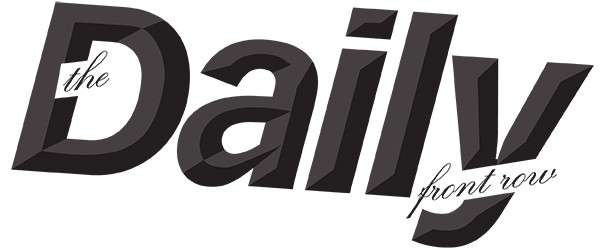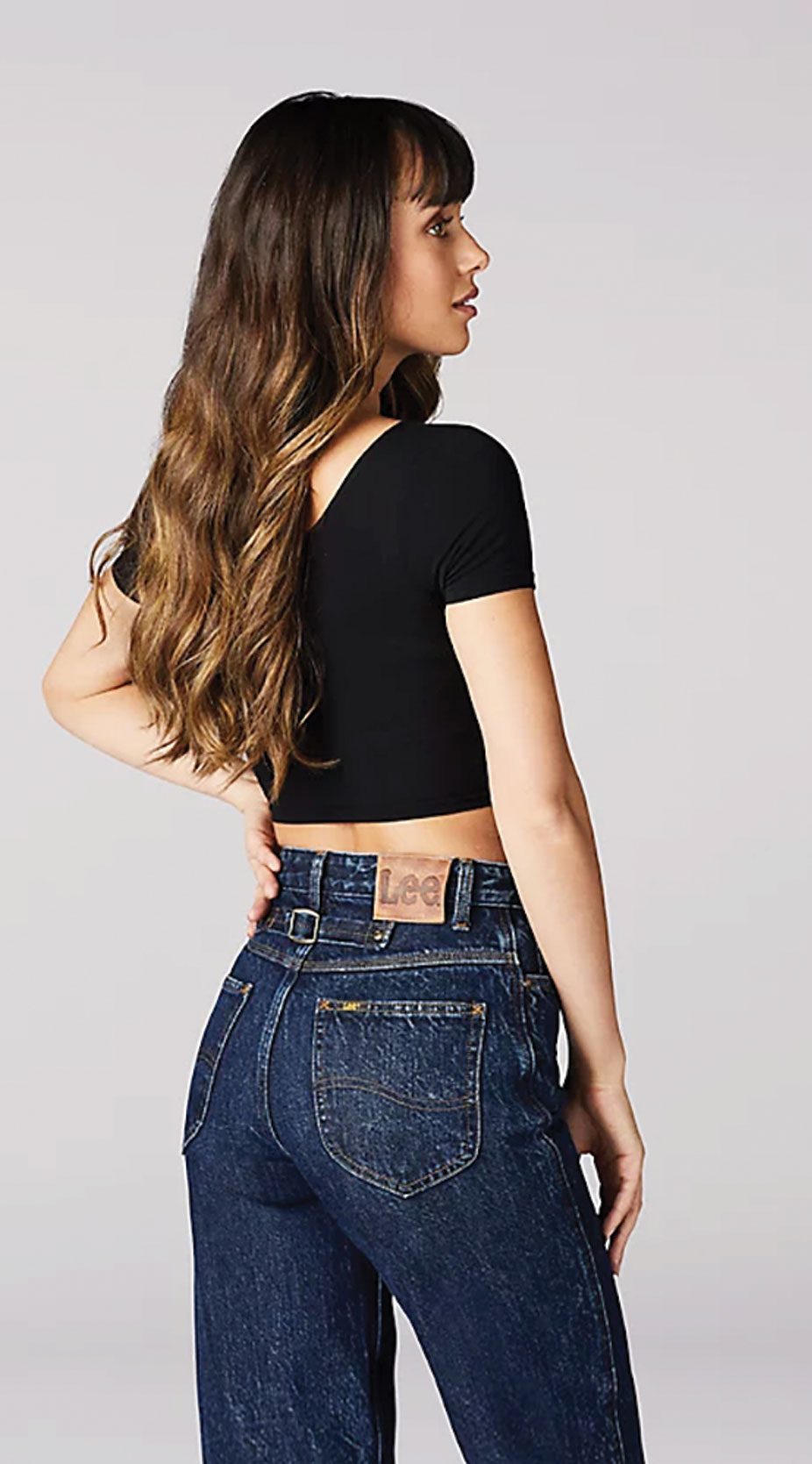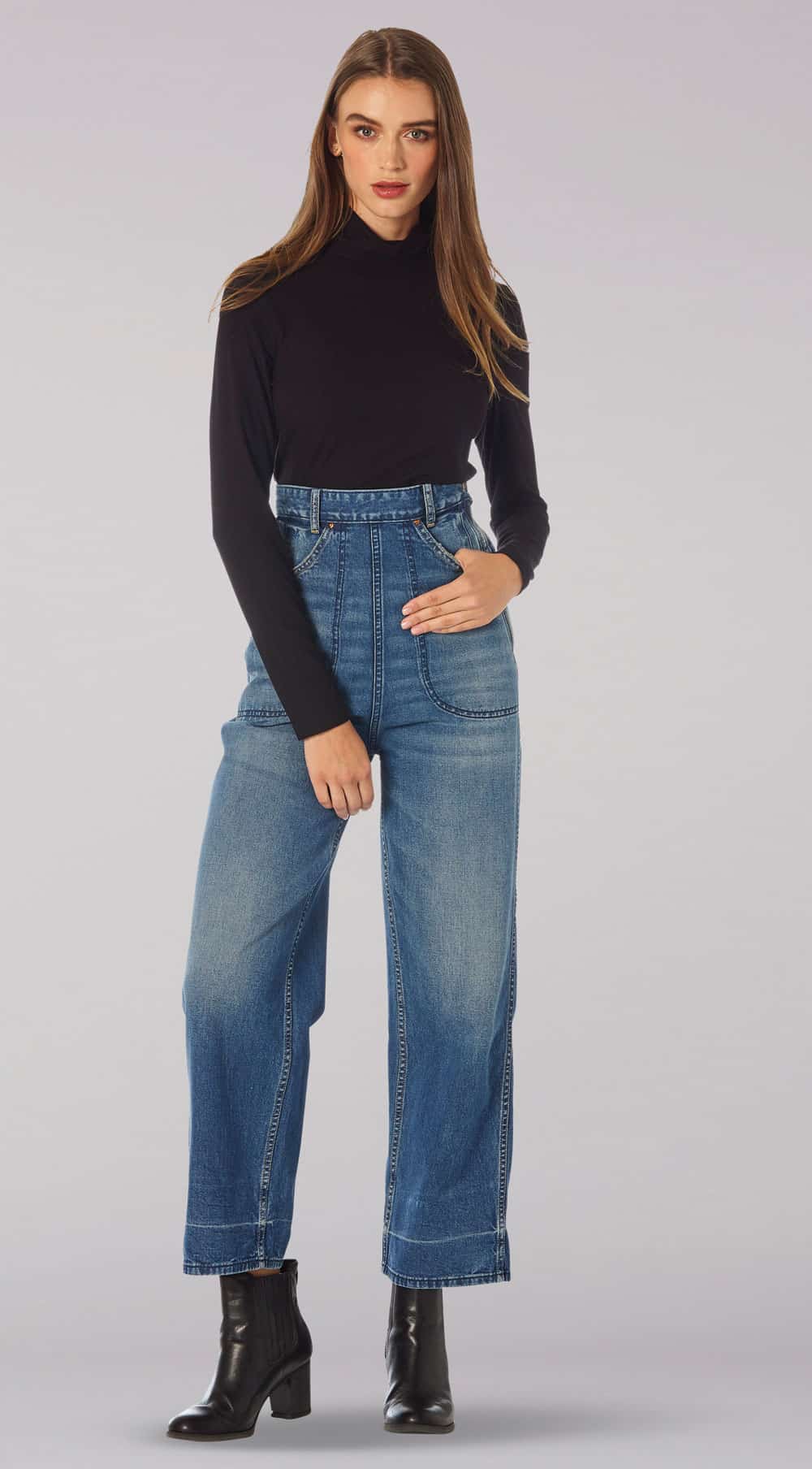Last year, Betty Madden took on the role of vice president, global head of design at Lee. Her biggest victory to date? Marrying the denim brand’s storied past while looking ahead to the future. It’s not often one finds seeds of progress and sustainable ideas from the archives of a century-old company, but Madden seems to have a gift for spotting existing themes that modern customers are hungry for. She dishes to The Daily about exploring Lee’s archives, why you should hold on to jeans, and how jeggings are the athleisure of the denim world.

Betty Madden (Courtesy)
What was your personal first experience or introduction to Lee?
I grew up in the ’80s and ’90s. For me, Lee was the brand to wear. I remember having a Lee jacket that I bleached. I had another Lee jacket that I dyed. I had pleated jeans. I remember wearing Lee jeans only when I was in high school. For me, it’s interesting that Lee got so quiet for a while. When I was called for this particular job, when the recruiter said to me, “Lee,” I got an instant emotion, an instant nostalgia. Like, wow, I had forgotten that I love that brand and I loved everything about it. For me, it’s really falling back in love with it again, more so than my first serious experience with it.
You’ve held jobs at Nike and Victoria’s Secret. How have those experiences helped you work with denim?
I spent 12 years at Abercrombie overseeing and developing denim, so I have a pretty vast experience in denim. But then post Abercrombie, I’ve had such a diverse background. The sport and lingerie fields are, in a way, as unique as denim. It’s all about innovating the comfort factor. It really has to perform. At Nike, you’re designing for “zero distraction.” In lingerie, development for comfort is consumer focused. I take a little bit from everywhere that I’ve been. Experience in general applies in different ways wherever you go.
You’ve been global VP for about a year now. What’s it been like?
It’s been wild. Right when I was hired, we were moving the brand from Kansas City, where it was born and lived for 130 years, to Greensboro, North Carolina. So that was a big shift. And then in addition to that, we were going into Fall ’20 and setting up a design organization. There was a lot happening last year. But despite all that, I think we made huge progress with our product and our marketing strategies and people, and there were a lot of great things that happened last year.
Was it daunting to join the brand as it was celebrating its 130th anniversary?
No. That wasn’t daunting to me at all because it’s something so exciting, interesting, and unique for a brand to be that old and have such a rich, beautiful history. It was actually exciting to be here during that moment.
- Lee (Courtesy)
- Lee (Courtesy)
Lee has reissued several archival styles. Did you update or modernize them?
The only styles made exactly the way they were are the all-purpose [female] jean, the Lady Lee, and the Frontier. Those were replicated down to the fabric construction, the details, the fit. The modifications were minimal. But typically when we dip into the archive, we will make sure that it’s a current fit, and it’s comfortable. People’s bodies have changed. We definitely modernize. We don’t want to be just a reissue brand, but we definitely want to use our reissue pieces as a celebration of the past and a way to incubate things that may be relevant now.
Why do you think people are so attracted to vintage styles these days?
I have a 12- and a 16-year-old. When I see their reality, they live almost a digital life. I think that’s the reason Coca-Cola, French fries, old jeans—things that feel warm and cozy and nostalgic—feel really unique right now. Brands that feel grounded, creative, and handmade, like a real human connection, feel special. That’s where Lee has a real edge. There’s nothing fake or made up about our brand. People are hungry for that because it seems unique.
Tell us about going through Lee’s archives. What did you discover?
We have an archivist who is museum trained. This is going to sound cliché, but when I went into the archive in Kansas City, I almost started to cry because it was so beautifully maintained. It was cataloged down to every scrap of paper, every receipt, every order book, every decade. We had H.D. Lee’s shirt, his desk.… It’s emotional to look at the parallels in terms of how marketing was approached back in the day. When you look at how we participate in trends from way back to the ’60s, ’70s, ’80s, and even the 90s, there’s just so much there. We outfitted cowboys. We outfitted women who were doing things before it was cool for women to do it. We were outfitting the military, railroad service men—anything and everything that eventually is on trend and goes down the runway is part of our story.

Lee advert from 1948 (Courtesy)
How do you feel about jeggings?
I can actually remember the first time at Abercrombie they showed us jeggings. Our mouths dropped. We were like, what the hell is that? But I remember thinking, this is going to be something, because it just made sense at the time. We think people were abandoning jeans to wear athleisure, and it was really that people were abandoning sweatpants to look sharper in their lazy pants. It was an innovation at the time to solve the last business to that industry. Now, because jeans have gotten so comfortable and we have technologies where they’re cooling and they stretch, they’re comfortable, we’ve come to a crossroads. Skinny jeans are downtrending, so jeggings feel tired right now. But I don’t think that means that they’re going to go away. They’ll come back around.
Are there any denim trends you regret partaking in?
I wore some pretty low-rise flare jeans back in the Britney [Spears] days. But I don’t think denim is a throwaway. Eventually, it all comes back around. Who knows, a couple years from now you might see me in a low-rise pair!
Is it difficult to innovate in the world of denim? How do you keep pushing things forward?
Innovation for us right now is through sustainability. There’s a huge push in terms of making denim a much cleaner product that’s better for the world. [We also have] technologies, and how we make fabrics to perform for people, whether they keep you cool or fit you better. We design through 3-D, which can map different body shapes and sizes and make sure that we’re making products that fit in a totally new way. Lasting innovation is something that you can get your teeth into, and it’ll last for a long time. It’s something iterative that you can build on.
Why is sustainability important to you?
Not only are we experiencing crazy weather patterns and stuff going on, it’s scary for someone who has children and someone who thinks about the future. I don’t want to participate in anything that’s making that worse. When you think about the world of denim, there’s a lot that goes into it. Even in the early days, indigo is hard to sew. There’s a lot of cleaning up that’s been done over the years. I would love to be part of eliminating the things that are used in denim that aren’t great to the planet. I’m also really passionate about consumption. Denim isn’t something you throw away. There’s something endearing and sustainable about the simplicity of that. If we can make jeans in a clean and healthy way, and it’s something that people hang on to and gets more beautiful with age—there’s a simplicity and sustainability to that.
What do you think the future of denim holds?
We’ll continue to build on something that is timeless and effortless. It’s the most unifying, democratic piece of clothing the world wears. I think the future of denim is that it’ll always be here.
Make sure to pick up your free copy of The Daily Front Row outside all the major shows or read the full issue below.
Subscribe to our newsletter and follow us on Facebook and Instagram to stay up to date on all the latest fashion news and juicy industry gossip.



